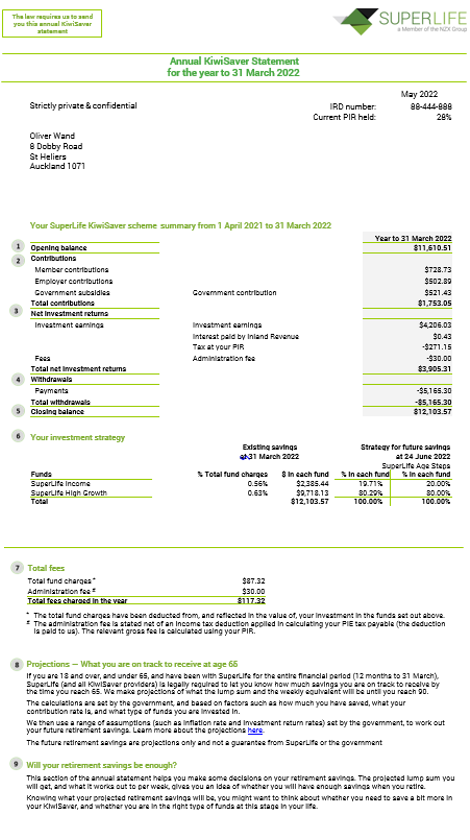Do you know what level of income you’d like to have when you retire? What about how much you need to have invested, to provide that income? Or, how you should invest your assets to provide you with that income? The answers to these questions are in the SuperLife “Thinking about your retirement” guide.
In planning your retirement, it must be remembered that in New Zealand, almost everyone who reaches age 65 qualifies for the state benefit (New Zealand Superannuation). For a single person this is $20,008 a year after tax. A married couple gets $30,781 (1 April 2016). You need to decide how much more you will need in retirement above this and and know how much you should be saving to achieve that goal?
The answer to “how much you should be saving?” is different for everyone, according to their individual circumstances. For you it will depend on your:
- current age
- current income and lifestyle
- intended retirement age
- target retirement income (i.e. preferred retirement expenditure levels)
- current retirement savings and assets
- likely inheritances and other sources of assets.
To work out your position, check out the calculators at www.superlife.co.nz and on www.sorted.co.nz. Here is an example which may assist you when thinking about your own situation.
Tracy is single, 45 years old and has no dependants. Tracy earns $60,000 a year. She’d like to retire at age 65 with an annual income of $38,517 after-tax (in today’s dollars). She currently has $40,000 in a superannuation scheme, $10,000 in KiwiSaver and is contributing $3,000 a year (5% of her pay) which is being split 2% to superannuation and 3% to KiwiSaver. These are both being matched $1 per $1 by her employer (including ESCT) as applicable. After the ESCT tax, the net employer contribution is $2,100.
| Scenario |
Tracy |
| Current age |
45 |
| Intended retirement age |
65 (20 years' time) |
| Target retirement income |
$38,517 p.a. (in today's dollar i.e. about 80% of her after-tax income) |
| Current income |
$60,000 i.e. $48,146 after tax |
| Current accumulated savings |
$50,000 ($40,000 Super, $10,000 KiwiSaver) |
| Current annual savings |
|
| - Tracy |
$3,000 |
| - Her employer |
$2,100 (net of ESCT) |
| - Government |
$521 (KiwiSaver MTC) |
In order to generate assets to provide a total annual income of $38,517, Tracy will need assets of around $340,000 on her retirement at 65. This will provide an income of $18,509 p.a. which together with her NZ Super benefit provides the $38,517 target. It also allows for the $38,517 to grow to match inflation. It assumes a 2.5% p.a. real return and that in retirement Tracy will spend both the investment income and her savings i.e. if she times it right, she will die as she spends her last dollar.
Of the required savings, Tracy already has $50,000 saved which will grow to $81,000 at age 65 in today’s dollars. Assuming Tracy continues to save at $3,000 a year, her total additional superannuation including the Company’s contribution will be equal to $140,000 in today’s dollars, by her intended retirement age. Tracy will therefore have a shortfall or gap.
| Scenario |
Tracy |
| Super and KiwiSaver balance on retirement |
$221,000 |
| Amount required |
$340,000 |
| Shortfall |
$119,000 |
To meet the shortfall, Tracy will need to consider further savings.
How to make up the shortfall
Assuming that Tracy will not inherit any money, Tracy will need to save more than her current $3,000 contributions in order to reach her retirement goals. She can do this by contributing voluntarily to her current superannuation scheme or by investing in assets outside the superannuation scheme (e.g. in a business or a rental house etc.). Tracy can start now and do it uniformly over the period to age 65, or start later when she has more disposable income. If she were able to invest a further $4,680 a year (i.e. $390 a month), she should be able to make up the shortfall and reach her retirement income goal (a retirement income of $38,517 per year).
| Scenario |
Tracy |
| Additional savings (amount p.a.) |
$4,680 |
| Investment return (% p.a.) |
2.5% p.a. |
| (after tax, expenses and inflation) |
|
| Additional savings at retirement |
$119,000 |
Of course there are other options. If Tracy has other demands on her money (e.g. a mortgage), she should probably defer saving until the mortgage is paid off. Saving by paying off a mortgage is a very efficient form of saving. When the mortgage is paid off, the amount required to be saved will be more than $4,680, but at that time, Tracy will be able to also make savings equal to her current mortgage payments.
Your situation
If you want to test your financial position and what you might have to do, check out the SuperLife “savings calculator” at www.SuperLife.co.nz. Also, phone SuperLife for the booklet “Retirement savings guide”.
____________________________________________________________________________________
1. If Tracy doesn’t want to spend her savings and only wants to live off the income, she will need assets of $700,000 not $340,000.
The legal stuff
This is not a product disclosure statement for the purpose of the Financial Markets Conduct Act 2013. A product disclosure statement is available from SuperLife free of charge. Before making a decision, you should consider whether you need to seek financial advice. If you wish to have personalised financial advice, you should talk to an appropriately experienced Authorised Financial Adviser.

